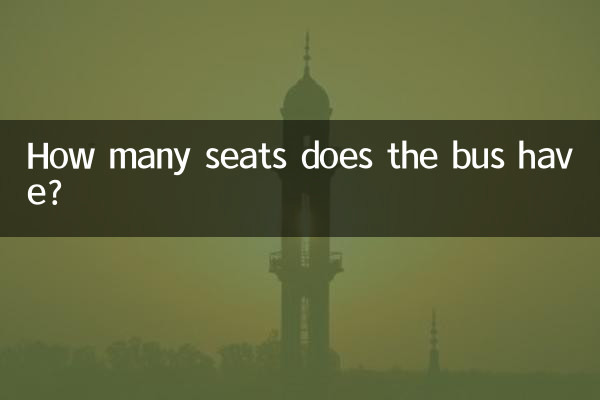How many seats does the bus have? ——Revealing the relationship between the seat layout of different models and hot topics
Recently, topics about public transportation and tourism have once again become hot topics on the Internet. With the arrival of the summer tourist season, the seat configuration, comfort and safety of buses have become the focus of public attention. This article will combine hot topics in the past 10 days to provide you with a detailed analysis of the number of seats in different bus models, and display relevant information through structured data.
1. The correlation between hot topics on the Internet and bus seats

In the past 10 days, the following hot topics have been closely related to the bus seat issue:
| hot topics | Related points |
|---|---|
| Summer travel peak | Demand for tourist bus seats surges, comfort becomes a concern |
| New energy bus promotion | Comparison of the seat layout of electric buses with traditional models |
| New traffic safety regulations | Bus seat belt configuration and regulatory requirements |
| Group travel booking | How does the number of bus seats match the size of the group? |
2. Comparison of the number of seats in common bus models
The number of seats in a bus varies depending on the model, purpose and configuration. The following is the seat data of mainstream bus models:
| car model | Number of seats (standard configuration) | Main purpose |
|---|---|---|
| Minibus (minibus) | 15-25 seats | Short distance connection, small team |
| Standard tourist bus | 35-55 seats | Tour groups, long-distance passenger transport |
| double decker bus | 60-80 seats | City tours, bus routes |
| luxury business bus | 20-30 seats | High-end chartered cars and business reception |
3. Key factors affecting the number of seats on a bus
1.Model design: The body length and internal space layout directly determine the number of seats. For example, double-decker buses significantly increase passenger capacity by adding more layers.
2.Comfort needs: Luxury buses usually have fewer seats to provide more legroom and amenities.
3.regulatory restrictions: Different regions have strict regulations on the number of seats and safety standards for passenger vehicles. For example, the European Union requires buses to have no more than 4 seats in each row.
4. How to choose a bus with the appropriate number of seats?
For different scenarios, you can refer to the following suggestions:
| Usage scenarios | Recommended number of seats |
|---|---|
| Family outing (less than 10 people) | 15-seater minibus |
| Company team building (30-40 people) | 45-seater tour bus |
| School spring outing (more than 50 people) | 55-seater bus or two-car configuration |
5. Conclusion
The choice of the number of bus seats is not only related to travel costs, but also directly affects the comfort experience of passengers. Based on recent hot topics, it can be seen that the public's attention to the seat layout, safety and environmental performance of buses continues to rise. We hope that the structured data in this article can provide you with practical reference to facilitate efficient travel planning.
Note: The above data are common industry standards. Specific vehicle models may differ due to different configurations. Please refer to the actual vehicle information when booking.

check the details

check the details